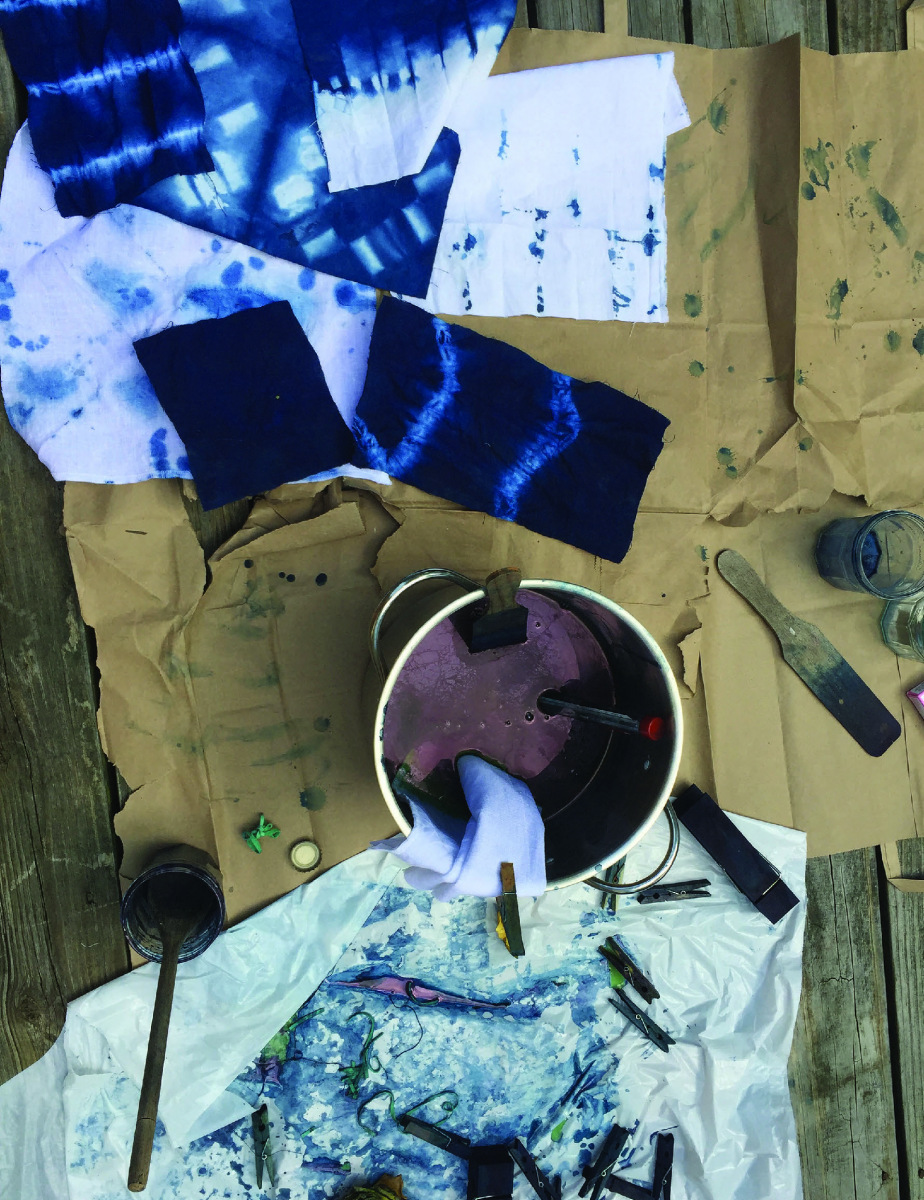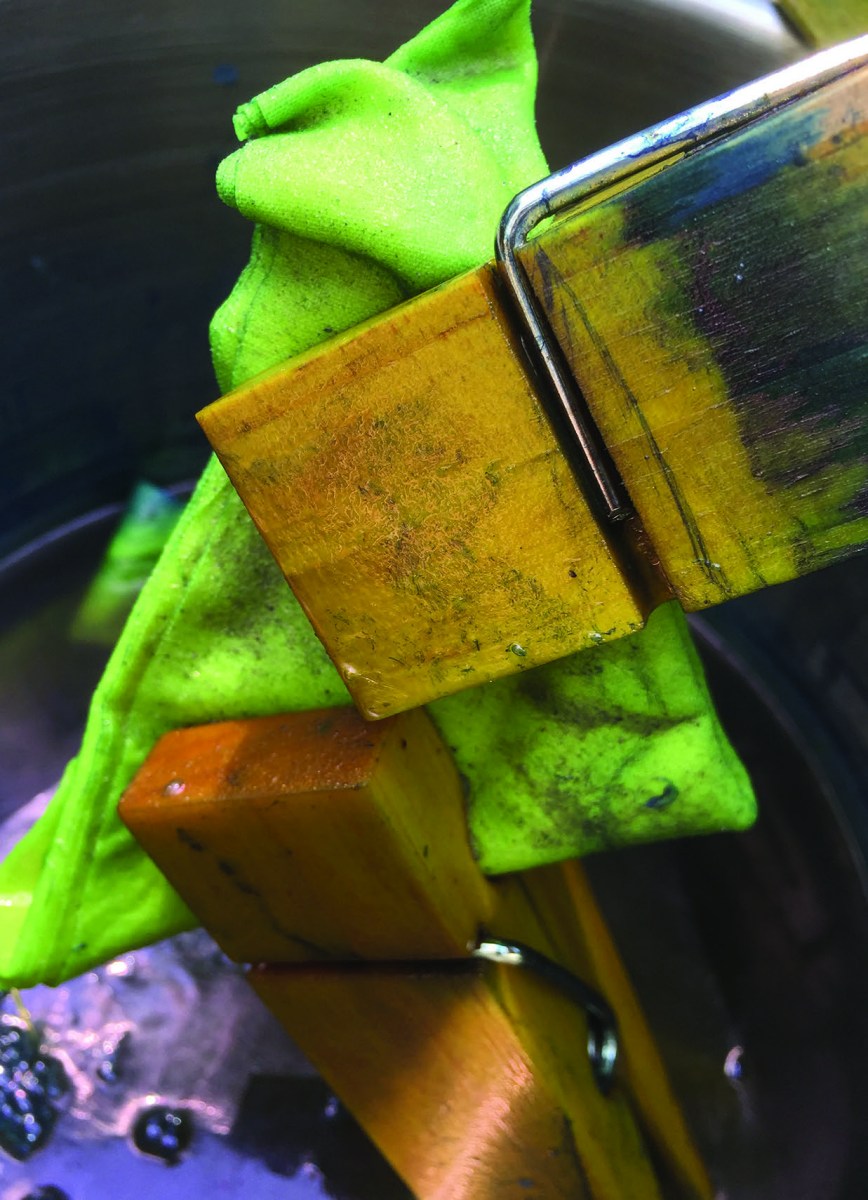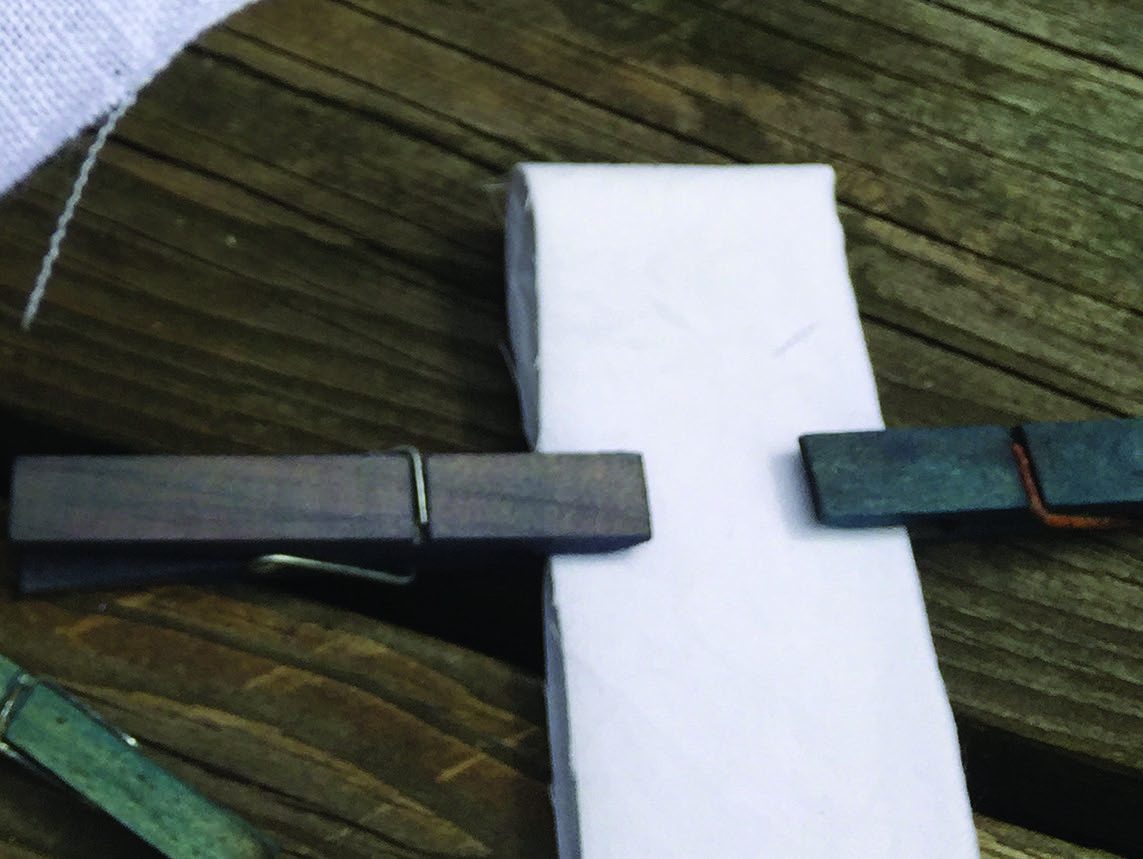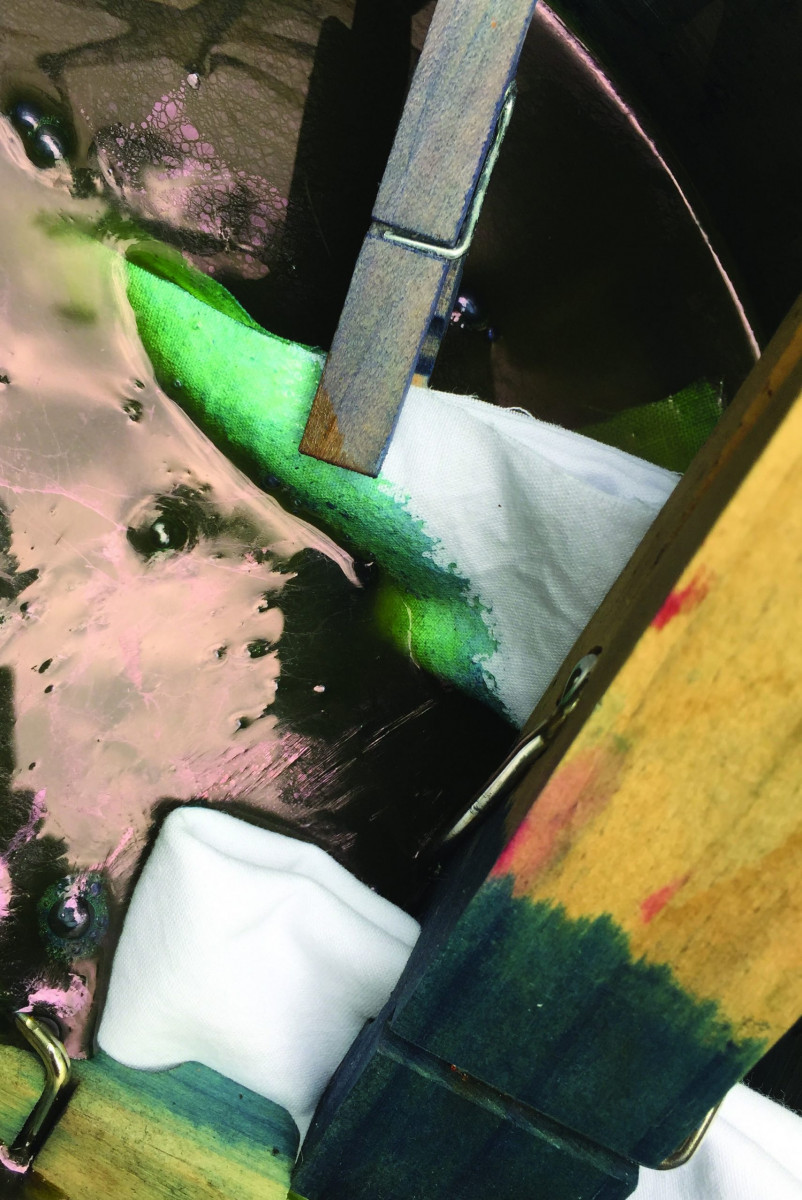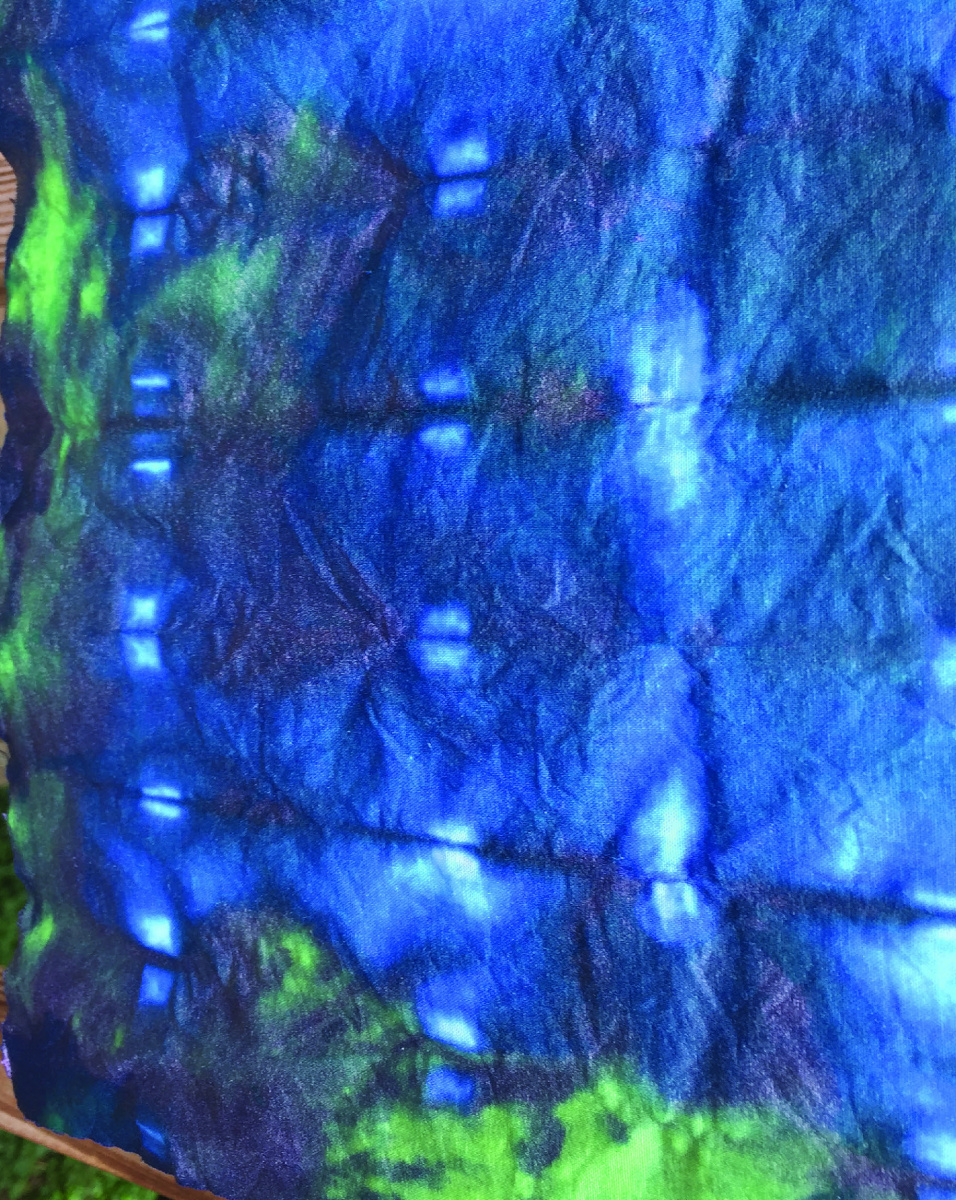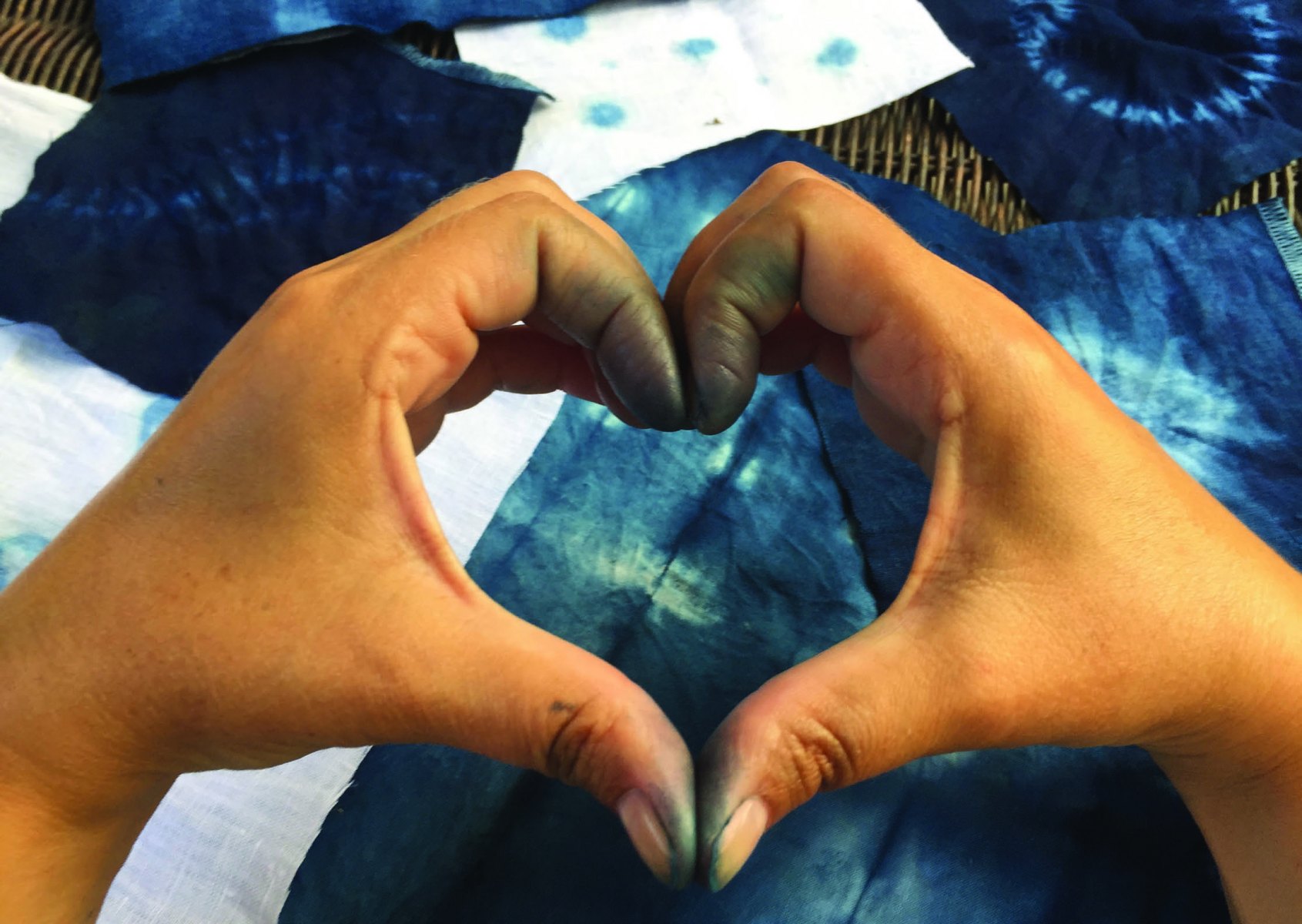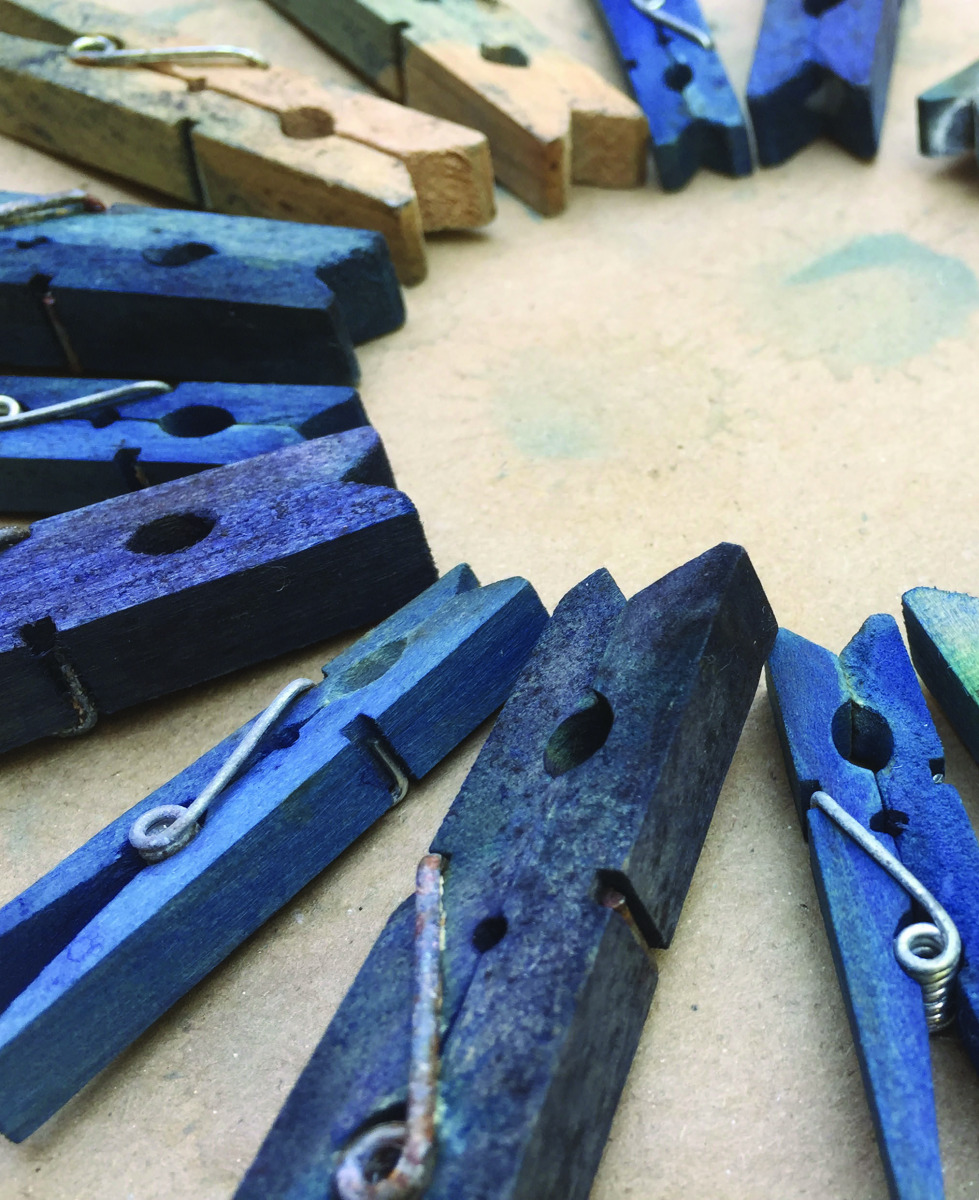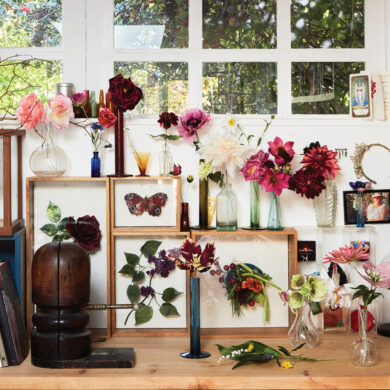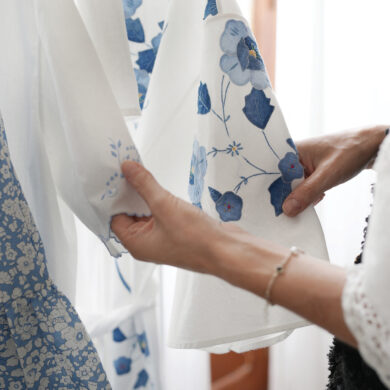Listening to my inner callings and having the courage to follow them has been a result of a long and interesting journey in my life. Whilst growing up I seemed to have been surrounded by women who chose to to the ‘sensible things’ in life rather than listening to their hearts and desires. My elementary school was a music school. I sang in their choir, played the cello, loved theatre and seemingly always made things. There were not many things available during Communism in Hungary so if we needed something, which most likely wasn’t in shops, we had to be creative and make it.
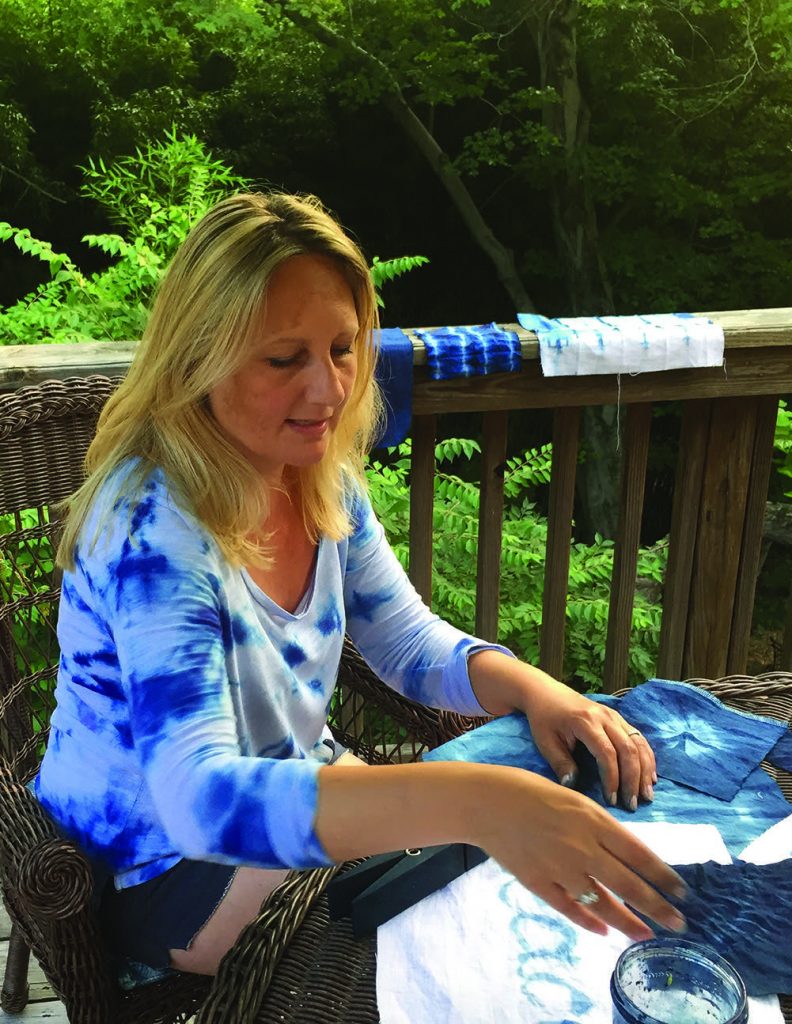
There is a certain intangible energy when women create together that is uplifting, inspiring and supportive.
I embroidered tablecloths, knitted, attempted to make clothes and created pictures out of eggshells, beans and peas. I also made things just for fun or as presents for family and friends. My most memorable creation was a mosaic picture made of eggshell pieces I gave to my Grandpa showing the tiny A-frame house he had designed and built himself for us as a holiday home.
My happiest hours were spent with my grandparents or biking down to the lake in the summers in the company of an apple, my little radio and a book, lying in the sun on its shores until I was more tanned than anyone else.
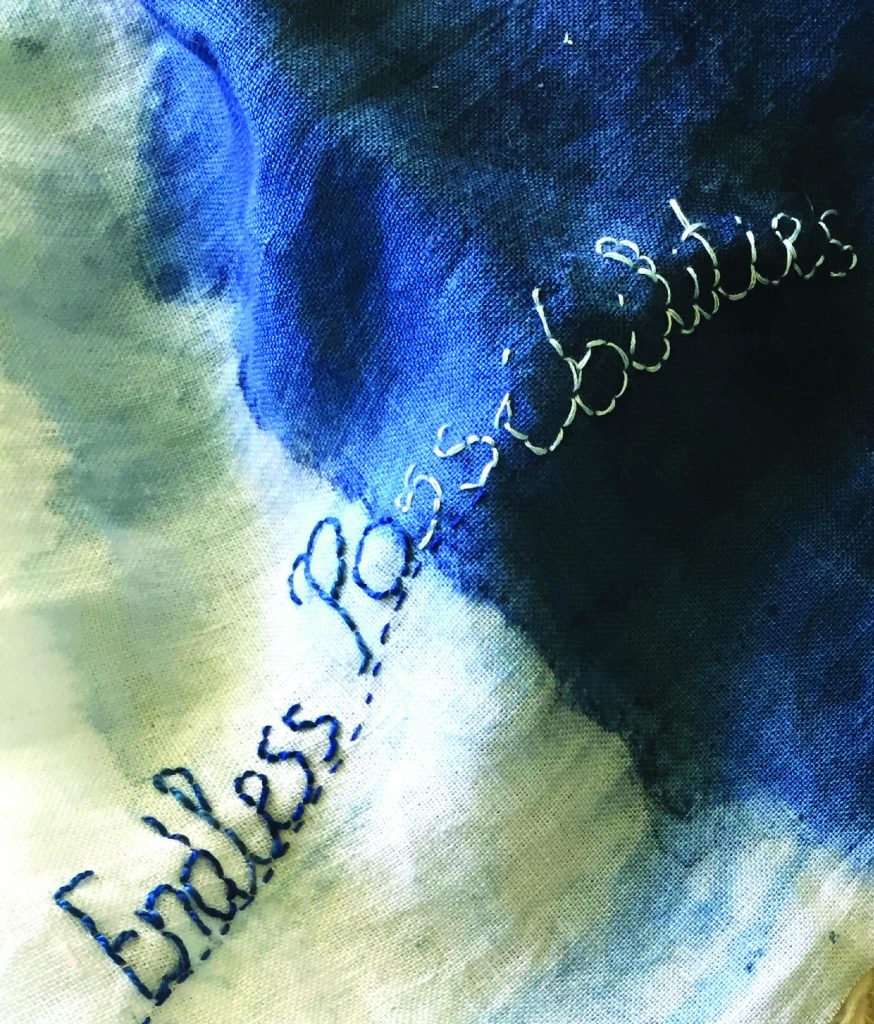
I moved to London at age 19 with only a suitcase and a return ticket to be an au pair and to learn English. I ended up staying for 21 years. My early years there were spent studying, trying to make ends meet and getting to know a different culture. I studied Business, earned a Masters Degree in International Business Studies, and worked in many offices, one being the small London office of the Nasdaq Stock Exchange. It took almost ten years to get to that point.
I met my husband at Nasdaq and we often strolled around London’s markets in our carefree early days. It wasn’t hard to fall in love with London’s many markets. Our favorites were Greenwich, Spitalfield and Borough Market. Handmade things came back into my life through these visits. One day I decided to have a stall. I painted some tea lights and wood mirrors and off I went. It was hard to leave my well-paid office job behind though, so for a while I did both. I met a lot of interesting people at the markets and fairs and had a wonderful time. I had a great sense of aesthetics, was a pretty good buyer and loved handmade things. I slowly started making and buying all kinds of things to sell through exhibitions, markets and eventually a shop.
A few years later we had a lovely little boy, and as he approached toddler age, London’s fast pace, grey skies, minimal summers, and the expensive “shoebox” apartment we were living in started to become less appealing. We didn’t have any family around, and our friends were either always working or moving to and from cities in different parts of the world. We moved to the U.S. to the suburbs near Washington, D.C., completely changing just about every single aspect of our life. The move allowed for a much slower-paced life. I was finally able to create to my heart’s content. I was in my forties and it felt like I could pursue anything I wanted.
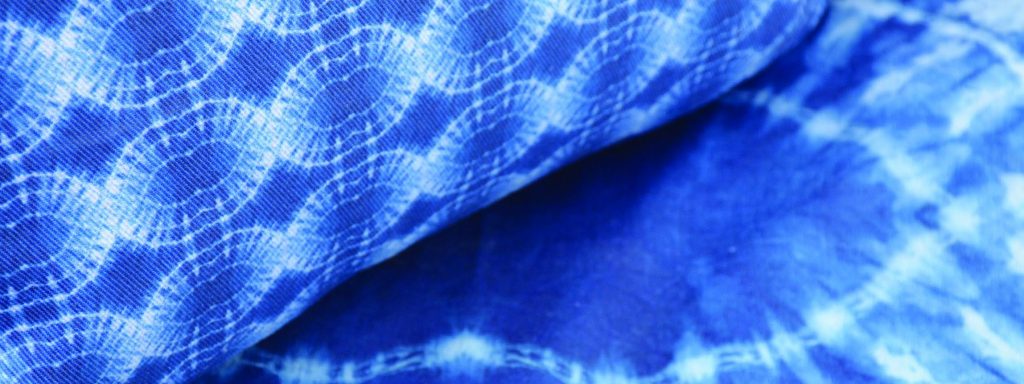
For me, the gift of creativity was the perfect excuse to stay home and explore arts and crafts. About this time I began to research and learned to dye with indigo, did watercolor, made paper out of tree bark that we had to pound, took up painting fabrics and embroidered for the first time again after almost 20 years. It really helped me to figure out what I wanted and what I didn’t want anymore, what I loved and who I really was. To see what was important in life and what wasn’t anymore…or maybe that’s just a natural lifelong process for all of us? But it was a good thing for me.
Natural indigo dye comes from a plant and nowadays comes in a powder format. There were times in history when indigo was transported across continents on ships, was bought and sold as a commodity, and at one point was more valuable than gold. It takes humble materials to create pattern with indigo. Cloth pegs, folded fabric, rubber bands and simple running stitches pulled tight together can produce a variety of wondrous patterns. Fabric pieces are prepared with these relatively simple methods, then dipped into the slowly heated indigo vat. Recipes vary for this. Unlike with most other dyes, fabrics don’t have to be prepped with anything before putting them into a natural indigo vat. Cloth pegs, folded fabric, rubber bands and simple running stitches pulled tight together can produce a variety of wondrous patterns. Fabric pieces are prepared with these relatively simple methods, then dipped into the slowly heated indigo vat. Recipes vary for this. Unlike with most other dyes, fabrics don’t have to be prepped with anything before putting them into a natural indigo vat.
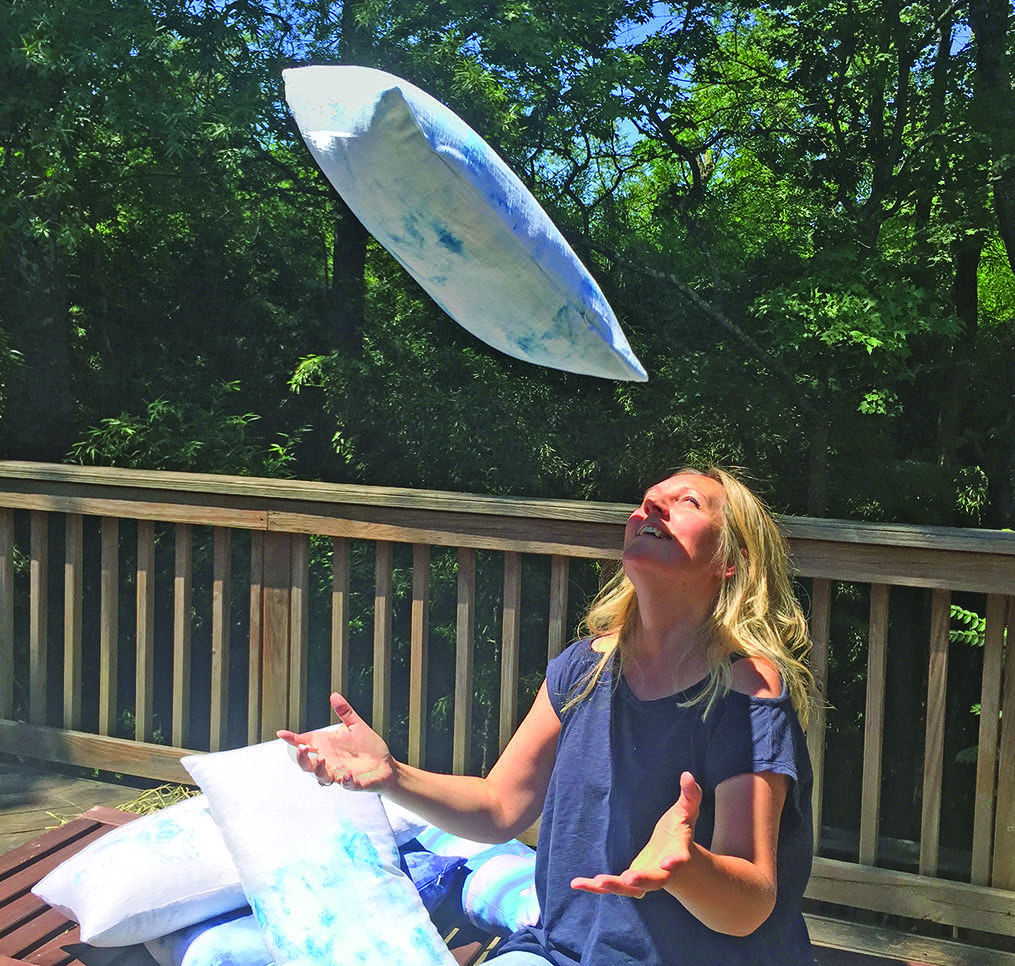
Indigo symbolises a mystical borderland of wisdom, self mastery and spiritual realisation. While blue is a colour of communication with others, indigo turns the blue inward, to increase personal thought, profound insights and instant understandings.
I prefer to dye on a sunny day and move my pot outside into the sun once my dye pot is warm enough. It has a unique smell that I kind of like lingering around outside. Fabrics can stay in the dye for long periods of time. Once removed from the dye bath, the fabric will appear yellow-green, but then it oxidizes and turns beautiful shades of blue. To reach deeper shades they must be taken out, aired, then dipped into the dye again. This process can be repeated many times.
I chose to concentrate on working with dyes because the process of creating pattern on cloth is so unpredictable and wondrous; it was a delightful discovery. I researched Japanese culture (my husband’s mother is Japanese) and found a local class in the method of dyeing with indigo. There is something deeply spiritual about lifting a piece of cloth out of deep blue water, seeing it quite green, then as it mixes with the air, taking its first breaths and watching it turn all shades of blue right in front of your eyes within minutes. The Japanese even have names for the shades such as “blue of the ephemeral flower” or “blue of a thousand years.” I also use synthetic dyes now, which aren’t as wondrous but playing with colors and mixing them really is!
I have also realized that the dyed pieces could be made even more unique by putting them on the computer and creating endless repeating patterns. This really makes my heart pound faster. I think any creative process can teach us a lot about ourselves. I think it helped me reflect on my life and find more balance. Studying how different cultures used dyes and embroidery and trying to put it in a modern context has been a great creative challenge for me. And I love a challenge! You could say I thrive on it. Tell me I can’t do something and I’ll try my best to prove you wrong. Ultimately I just want to be able to be creative and have a home that is my sanctuary, filled with beautiful and comfortable things I’ve made.
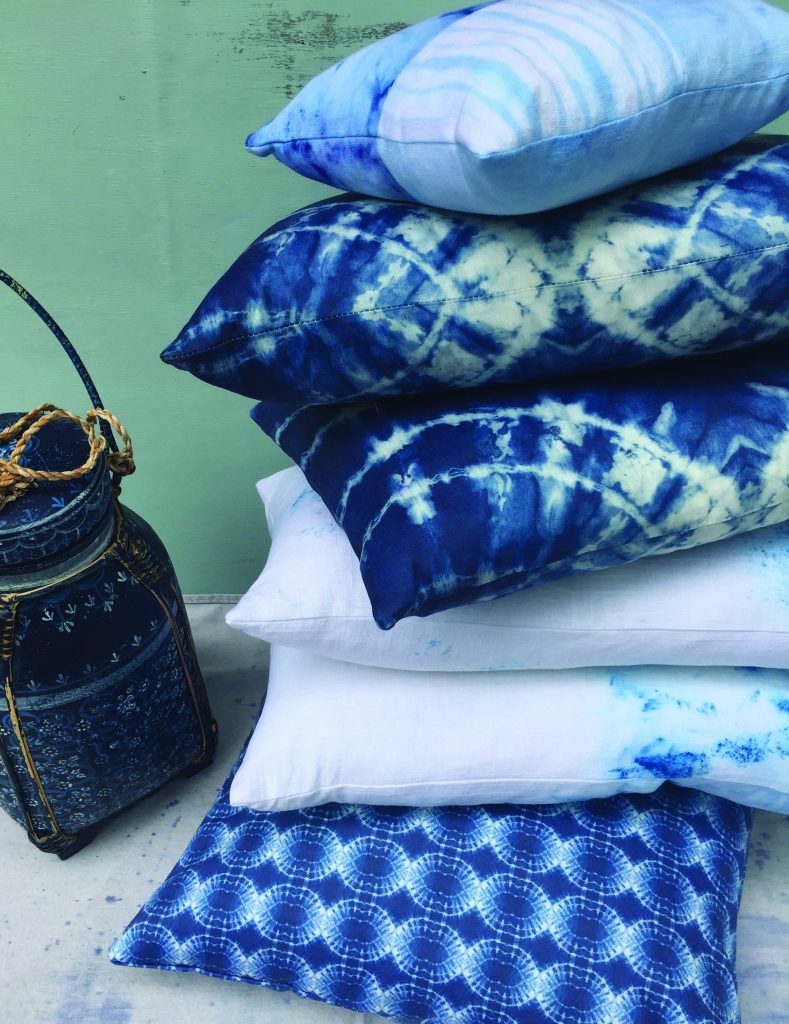
I discovered that working with colors really awakened my senses and dying fabric can be a very spiritual experience. My creative process is really more of an artistic meandering: explore, get lost, focus, meander some more, try again…find joy…this defines “creating” for me. It’s a journey where you travel to an unknown destination.
“Roads were always made for journeys not destinations” —Confucius
Over the years I have found that there are so many inspiring women out there presently and throughout history. I love learning about them and then weaving a little bit of what I admire most about them and their story into my own journey. For generation upon generation, women have passed on their practical and creative knowledge to each other. It’s a special connection that we can tap into that ultimately makes us all better and more successful in how and what we create.
Listening to my inner callings and having the courage to follow them has been a result of a long and interesting journey in my life. Whilst growing up I seemed to have been surrounded by women who chose to to the ‘sensible things’ in life rather than listening to their hearts and desires. My elementary school was a music school. I sang in their choir, played the cello, loved theatre and seemingly always made things. There were not many things available during Communism in Hungary so if we needed something, which most likely wasn’t in shops, we had to be creative and make it.

There is a certain intangible energy when women create together that is uplifting, inspiring and supportive.
I embroidered tablecloths, knitted, attempted to make clothes and created pictures out of eggshells, beans and peas. I also made things just for fun or as presents for family and friends. My most memorable creation was a mosaic picture made of eggshell pieces I gave to my Grandpa showing the tiny A-frame house he had designed and built himself for us as a holiday home.
My happiest hours were spent with my grandparents or biking down to the lake in the summers in the company of an apple, my little radio and a book, lying in the sun on its shores until I was more tanned than anyone else.

I moved to London at age 19 with only a suitcase and a return ticket to be an au pair and to learn English. I ended up staying for 21 years. My early years there were spent studying, trying to make ends meet and getting to know a different culture. I studied Business, earned a Masters Degree in International Business Studies, and worked in many offices, one being the small London office of the Nasdaq Stock Exchange. It took almost ten years to get to that point.
I met my husband at Nasdaq and we often strolled around London’s markets in our carefree early days. It wasn’t hard to fall in love with London’s many markets. Our favorites were Greenwich, Spitalfield and Borough Market. Handmade things came back into my life through these visits. One day I decided to have a stall. I painted some tea lights and wood mirrors and off I went. It was hard to leave my well-paid office job behind though, so for a while I did both. I met a lot of interesting people at the markets and fairs and had a wonderful time. I had a great sense of aesthetics, was a pretty good buyer and loved handmade things. I slowly started making and buying all kinds of things to sell through exhibitions, markets and eventually a shop.
A few years later we had a lovely little boy, and as he approached toddler age, London’s fast pace, grey skies, minimal summers, and the expensive “shoebox” apartment we were living in started to become less appealing. We didn’t have any family around, and our friends were either always working or moving to and from cities in different parts of the world. We moved to the U.S. to the suburbs near Washington, D.C., completely changing just about every single aspect of our life. The move allowed for a much slower-paced life. I was finally able to create to my heart’s content. I was in my forties and it felt like I could pursue anything I wanted.

For me, the gift of creativity was the perfect excuse to stay home and explore arts and crafts. About this time I began to research and learned to dye with indigo, did watercolor, made paper out of tree bark that we had to pound, took up painting fabrics and embroidered for the first time again after almost 20 years. It really helped me to figure out what I wanted and what I didn’t want anymore, what I loved and who I really was. To see what was important in life and what wasn’t anymore…or maybe that’s just a natural lifelong process for all of us? But it was a good thing for me.
Natural indigo dye comes from a plant and nowadays comes in a powder format. There were times in history when indigo was transported across continents on ships, was bought and sold as a commodity, and at one point was more valuable than gold. It takes humble materials to create pattern with indigo. Cloth pegs, folded fabric, rubber bands and simple running stitches pulled tight together can produce a variety of wondrous patterns. Fabric pieces are prepared with these relatively simple methods, then dipped into the slowly heated indigo vat. Recipes vary for this. Unlike with most other dyes, fabrics don’t have to be prepped with anything before putting them into a natural indigo vat. Cloth pegs, folded fabric, rubber bands and simple running stitches pulled tight together can produce a variety of wondrous patterns. Fabric pieces are prepared with these relatively simple methods, then dipped into the slowly heated indigo vat. Recipes vary for this. Unlike with most other dyes, fabrics don’t have to be prepped with anything before putting them into a natural indigo vat.

Indigo symbolises a mystical borderland of wisdom, self mastery and spiritual realisation. While blue is a colour of communication with others, indigo turns the blue inward, to increase personal thought, profound insights and instant understandings.
I prefer to dye on a sunny day and move my pot outside into the sun once my dye pot is warm enough. It has a unique smell that I kind of like lingering around outside. Fabrics can stay in the dye for long periods of time. Once removed from the dye bath, the fabric will appear yellow-green, but then it oxidizes and turns beautiful shades of blue. To reach deeper shades they must be taken out, aired, then dipped into the dye again. This process can be repeated many times.
I chose to concentrate on working with dyes because the process of creating pattern on cloth is so unpredictable and wondrous; it was a delightful discovery. I researched Japanese culture (my husband’s mother is Japanese) and found a local class in the method of dyeing with indigo. There is something deeply spiritual about lifting a piece of cloth out of deep blue water, seeing it quite green, then as it mixes with the air, taking its first breaths and watching it turn all shades of blue right in front of your eyes within minutes. The Japanese even have names for the shades such as “blue of the ephemeral flower” or “blue of a thousand years.” I also use synthetic dyes now, which aren’t as wondrous but playing with colors and mixing them really is!
I have also realized that the dyed pieces could be made even more unique by putting them on the computer and creating endless repeating patterns. This really makes my heart pound faster. I think any creative process can teach us a lot about ourselves. I think it helped me reflect on my life and find more balance. Studying how different cultures used dyes and embroidery and trying to put it in a modern context has been a great creative challenge for me. And I love a challenge! You could say I thrive on it. Tell me I can’t do something and I’ll try my best to prove you wrong. Ultimately I just want to be able to be creative and have a home that is my sanctuary, filled with beautiful and comfortable things I’ve made.

I discovered that working with colors really awakened my senses and dying fabric can be a very spiritual experience. My creative process is really more of an artistic meandering: explore, get lost, focus, meander some more, try again…find joy…this defines “creating” for me. It’s a journey where you travel to an unknown destination.
“Roads were always made for journeys not destinations” —Confucius
Over the years I have found that there are so many inspiring women out there presently and throughout history. I love learning about them and then weaving a little bit of what I admire most about them and their story into my own journey. For generation upon generation, women have passed on their practical and creative knowledge to each other. It’s a special connection that we can tap into that ultimately makes us all better and more successful in how and what we create.






